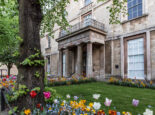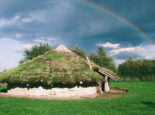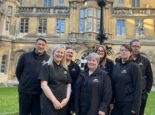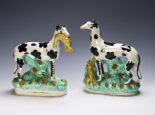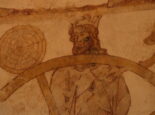St Kyneburgha – 900 years young!
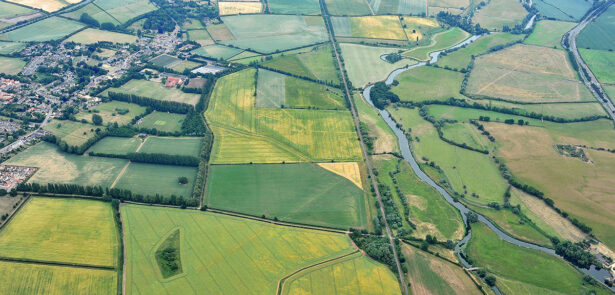
One of the region’s most historically and architecturally significant churches, St Kyneburgha in Castor, celebrates its 900th anniversary this year – and everyone is invited to the party! We spoke to two of the organisers, Antonia Pounsett and Martin Chillcott, to find out more...
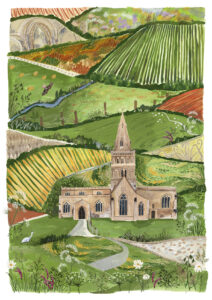
Illustration by Helen Wallace
Even in the UK where a lot of things are famously quite old, a 900-year anniversary is a very special occasion!
Sometimes it is the sort of thing we take for granted – and we do forget that having the opportunity of a 900th anniversary is pretty amazing! The cathedral had its 900th anniversary in 2018, of course, and there is an important link between Kyneburgha’s church and the cathedral, which is Kyneburgha and her brothers were instigators of the original Peterborough Cathedral back in the seventh century.
A powerful Saxon family who were also Christians?
Their father was King Penda, a pagan – and proudly pagan – but he was comfortable with his children being Christian, because this was a time when politics and religion were entirely tied up. Kyneburgha and her brother Peada were both married into the Northumbrian royal family, but Peada was then murdered by his wife! Once Kyneburgha’s husband was also probably murdered, Kyneburgha returned to Mercia to establish the religious community that became St Kyneburgha’s Church.
What’s now Castor, Ailsworth and Water Newton was significant back then as the location of the Roman town of Durobrivae, wasn’t it?
Kyneburgha will have established her abbey in Castor partly because it’s got this massive Roman palace, which might have been a bit crumbly, but given that bits of it were still standing when Edmund Artis (a pioneer of archaeology who carried out many digs at Castor in the 1820s) was excavating the area, it’s in pretty good shape as an established location. What we have now is centuries of history layered on top of each other.
Is this what the celebrations will be about – the community and the people who have been part of the church over the centuries?
Yes, and we’re trying to make it about the building itself, as well. For example, one of the fabulous things about it is the craftsmanship, and the people who will have designed and put all those phenomenal details into the church would have been stonemasons, carpenters – ordinary trades people we don’t often think about when we talk about historic buildings. A few years ago I got talking with a stonemason in the village, and I had a very nice picture of some of the stone carving inside the church. I showed it to him and said, ‘What would have inspired a stonemason to have made this?’ The reply was: ‘He wanted to be sure he was going to get paid at the end of the week!’
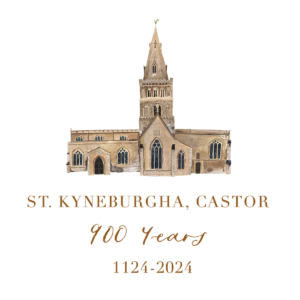
We know that at the moment, you’re still finalising details for the celebrations – which are going to take place across the year in spring, summer and autumn – but can you give us a taste of what to look forward to in and around Castor across 2024?
We want to make this an event that people both in the village and outside the village can enjoy, so we’ve got stuff to interest lots of different tastes, interests and age groups.
There will be three parts to the celebration: the first will take place in the spring, the second in the summer and the final one will happen in the autumn. Because we know the actual date the church was opened, way back in 1124 – it’s written on the building, the 17th of April – that’s when things will kick off. There’ll be a service at the church, preceded by a full peel, which is three hours long.
We’re hoping to light our beacon and illuminate the church Wednesday to Sunday throughout April, we’ll be ‘beating the bounds’ – that’s an organised walk round the parish boundary – and hosting a concert at the church. We’ve also got a whole host of fun events including a talent contest, a talk by BBC historian Jonathan Foyle, some ‘Horrible Histories’-style activities for children.
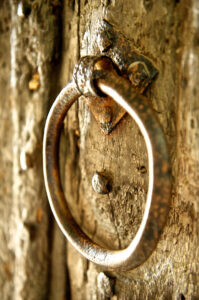
In the summer, we’ll be offering some really enjoyable, ‘outdoor weather’ events such as an ‘Anglo-Saxon sports day’, live music, food and drink, and then in autumn we’re going to be premiering a brand-new operetta by a very talented local musician and librettist called Ian Winfrey, who is working with another very talented chap, a composer called Jon Graham. The work is going to be a reworking of the story of Kyneburgha’s founding of the church. It’s a proper, professional job, and we’re fortunate to have enlisted the help of music director Kate Wishart – who has just stood down from leading the Peterborough Operatic society – and Monique Benoiton-Smith, who runs all the young people’s performing arts stuff in the Cresset, as production director. This will be held across three days in the church, performed in the round. Finally, a magnificent tapestry – based on Helen Wallace’s illustration – will be finished and hung in the church: a lasting momento of our 900-year celebrations!
The Moment magazine will be bringing you regular updates as the St Kynesburga Church and Castor celebrations occur throughout the year, letting you know when, where and what so you can add them to your diaries. Watch this space!
Who was Kyneburgha?
Around 600 AD, England as we know it didn’t exist – instead, it was more a patchwork of uneasily co-existing fiefdoms constantly jostling for supremacy. Kyneburgha was princess of one of these: a large and powerful kingdom called Mercia that stretched all the way from the Fens to the Welsh Marches. Her father was the legendary Saxon king Penda and her brother was Wulfhere, her co-signatory on the founding of Burh Abbey in Medehamstede – later to become Peterborough Cathedral and Peterborough respectively.
After her husband Alhfrith mysteriously disappeared following a disagreement with his fearsome father, Oswig, King of Northumbria, Kyneburgha very sensibly decided she was done with men, husbands and being part of the royal marriage market, and founded the church at Castor as a community for monks and nuns, and where she lived – one imagines contentedly and without fuss – as the first abbess before passing away in 680 AD. She left behind the amazing gift of the church, to stand for generations to come – and become a saint in the process.
Kyneburgha’s Peterborough
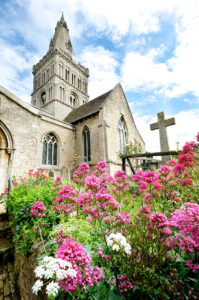 In Kyneburgha’s time, we know that nearby Flag Fen was already a thriving settlement with excellent trading and fishing thanks to its proximity to the water. To the soft, rolling landscape of the west lay the recent remains of once-busy Roman pottery town, Durobrivae – now the villages of Water Newton, Castor and Ailsworth – and in the middle, amongst “goodly waters… abundance of ploughlands and woodlands” (according to 12th century historian Hugh Candidus) a monastery known as Medeshamstede – founded by Abbot Seaxwulf in the mid-600s AD. This was later to become Peterborough Abbey, in part thanks to Kyneburgha herself.
In Kyneburgha’s time, we know that nearby Flag Fen was already a thriving settlement with excellent trading and fishing thanks to its proximity to the water. To the soft, rolling landscape of the west lay the recent remains of once-busy Roman pottery town, Durobrivae – now the villages of Water Newton, Castor and Ailsworth – and in the middle, amongst “goodly waters… abundance of ploughlands and woodlands” (according to 12th century historian Hugh Candidus) a monastery known as Medeshamstede – founded by Abbot Seaxwulf in the mid-600s AD. This was later to become Peterborough Abbey, in part thanks to Kyneburgha herself.
The church at Castor was established by Kyneburgha in the 7th century in the ruins of the Praetorium. It was burned down at least twice by the Vikings in the 10th and 11th centuries, and then rebuilt using old Roman building material ready for 1124. It’s thought some of the characters in the stonework represent Viking marauders!








